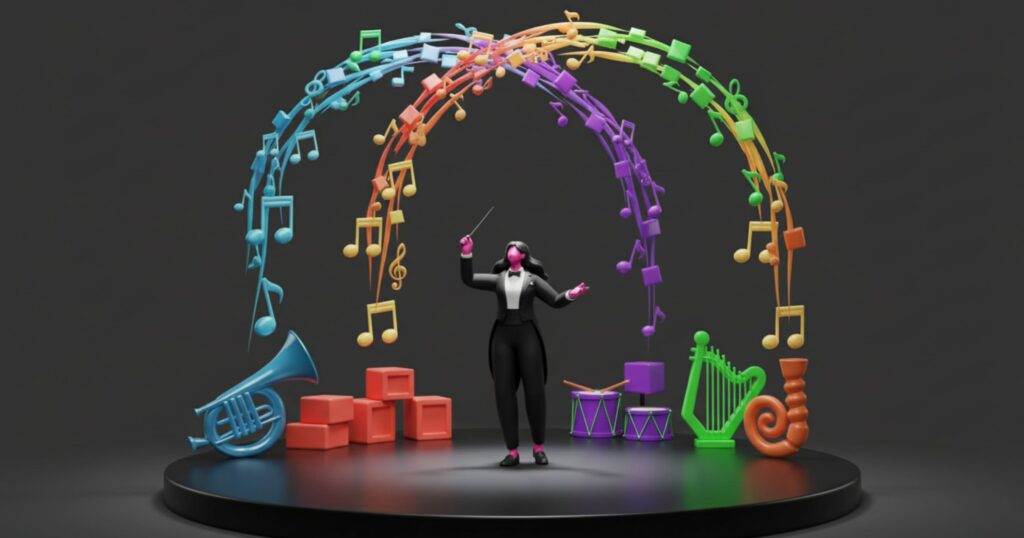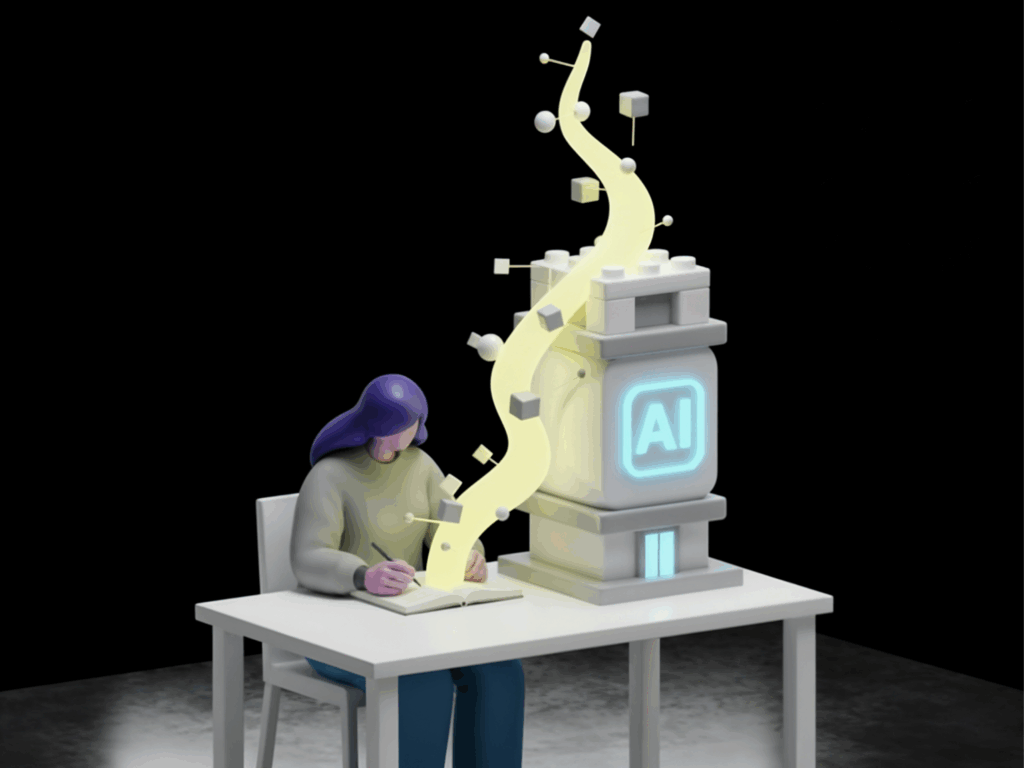Discover advanced AI orchestration techniques that move beyond basic tool connection to create intelligent, adaptive creative systems.

When a creative leader first implements AI orchestration, their initial step is often to use the strategic parameters of Euryka’s Elena persona to connect their scattered tools into a single pipeline. The results are immediately more efficient, but a plateau is often reached after a few months. The system is faster, but it isn’t getting any smarter. The human team is still bearing the full strategic burden: manually selecting the right AI for each task and correcting the same brand inconsistencies.
This is the critical difference between basic and advanced AI orchestration.
As Euryka’s Systems Architect persona, Mei, might explain: “Basic orchestration connects your tools. Advanced orchestration creates an intelligence that makes your entire creative system learn and improve over time.
Let’s break down what that intelligence looks like and how it transforms your workflow from a simple pipeline into a strategic partner.
Most orchestration tools are simple connectors. They create a “dumb” pipeline that moves work from one AI model to the next. This is better than manual copy-pasting, but the strategic burden remains entirely on you.
Advanced orchestration introduces an intelligence layer. This is the system’s brain. It sits between your creative intent and the AI models, learning from your projects, your feedback, and your brand’s unique voice. In Euryka, this is our Hive Mind. It’s what elevates the platform from a simple connector to a co-pilot that gets smarter with every project you complete.

Manually deciding which AI model and prompt structure is best for a luxury brand’s tagline versus a startup’s social media post is an exhausting and inefficient use of a creative leader’s time. An intelligent system should not force you to become an expert on the underlying technology; it should provide you with a team of experts to deploy.
This is the function of advanced orchestration. For example, instead of a single, generic AI, Euryka provides a team of specialised personas, each pre-configured for a specific strategic task. For a provocative new campaign concept, you would deploy Priya, our creative catalyst. For a strategic brief, you would call on Omar. For a final brand compliance check, you would assign Elena, our Brand Wizard.
In Euryka, this means you are no longer a prompt engineer trying to coax the right response from a raw tool. You are a creative director, deploying a specialised AI team member best suited for the task at hand. This is the architecture of intelligent delegation.
Your workflow shouldn’t be a rigid, one-size-fits-all process. A campaign for a healthcare client has fundamentally different requirements than one for a fashion brand.
An intelligent system understands this. It uses context-aware workflow design to adapt. For the healthcare client, it can automatically incorporate extra compliance checks. For the fashion brand, it can prioritise rapid visual experimentation. It even learns the working styles of individual team members, adapting to provide the right support for the right person.
This is the core of Euryka’s philosophy: the system should adapt to your team’s unique creative approach, not the other way around.

The most draining part of the creative process is often the final stage: catching and fixing small errors and brand inconsistencies. A basic workflow simply passes the work along, leaving the quality control entirely up to you.
An advanced system is proactive. It uses intelligent quality control to predict and prevent issues before they happen. It learns your brand’s voice so well that it can flag a sentence that “feels off” or a visual that doesn’t match your aesthetic, even if it technically follows the rules.
In Euryka, this is the role of the Brand Hub, which acts as the central source of truth for your brand. Elena then uses this intelligence to serve as your automated brand guardian, ensuring first-draft quality is consistently high and freeing you from the anxiety of endless revisions.

The shift from basic to advanced orchestration is the most significant evolution in creative technology today. It’s the difference between a tool you have to constantly manage and a system that learns, adapts, and grows alongside your team.
Your workflow shouldn’t just be efficient; it should be intelligent. It should learn from your successes, understand your brand’s nuances, and make your entire creative process smarter with every project.
The question isn’t whether this will transform creative work; it’s whether your team will lead this transformation or be left behind.
Your competitors are focused on basic automation. The opportunity is to build a workflow that gets smarter with every project. This is the difference between a simple tool and a compounding creative advantage. Book a demo to see first-hand how this intelligence is built.
